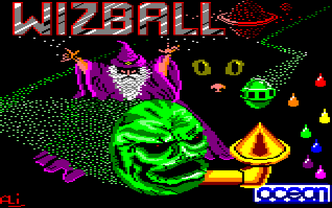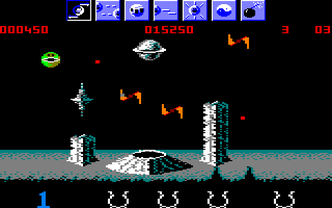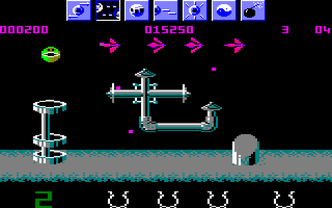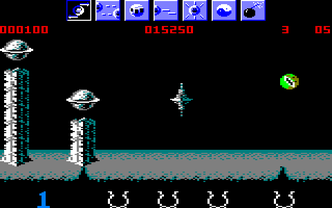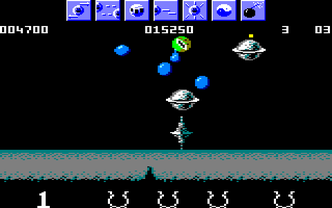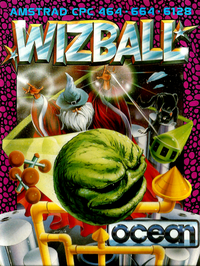Navigation:
Wizball Amstrad CPC
This game entry is not "published" yet and will not appear in game browers by default! (Edit and set publish = 1)
For many years, Wiz and his fantastic cat lived happily in brightly coloured Wizworld. All was not well however as a malevolent force has discovered the vista and intended to stamp out brilliance once and for all. The evil Zark and his horrible sprites have moved in to eliminate the spectrum and render all landscapes drab and grey. So jump in your transporter and with the help of your faithful servant Catelite restore Wizworld to its former glory. Collect icons for special effects as you manoeuvre to shake off the alien forces, Stunning graphics create the mood for a thrilling and compulsive game with hordes of hidden features and extra controls. — Cassette Inlay
Wizball is a computer game written by Jon Hare and Chris Yates (who together formed the company Sensible Software) and released in 1987 for the Commodore 64, ZX Spectrum and Amstrad CPC. Versions for the Amiga, Atari ST and PC were also released. The music in the Commodore 64 version was composed by Martin Galway.
Wizball's more comical sequel, Wizkid, was released in 1992 for the Amiga, Atari ST and IBM PC.
Gameplay
Wizball is a scrolling shooter in similar vein to Gradius with an additional collection dynamic. It is a horizontally scrolling game taking place over eight levels, which involves navigating around a landscape and shooting at sprites. However, the aim of the game is to collect droplets of coloured paint to colour the level. Each level starts off as monochromatic, drawn in three shades of grey, and needs three colours (red, blue, and green) to be collected to complete it. The player, a wizard who has taken the form of a green ball, can navigate between the levels through portals. At first the wizard only has access to the first three levels, but completing levels gains access to further levels. Each level has bouncing spheres of a different colours, and shooting them releases droplets, which may be collected. At the same time, each level needs a different colour to be added, which can be composed by collecting sufficient quantities of the correct colours. On later levels, the spheres of paint start shooting bullets, further adding to the challenge.
Source:Wikipedia
